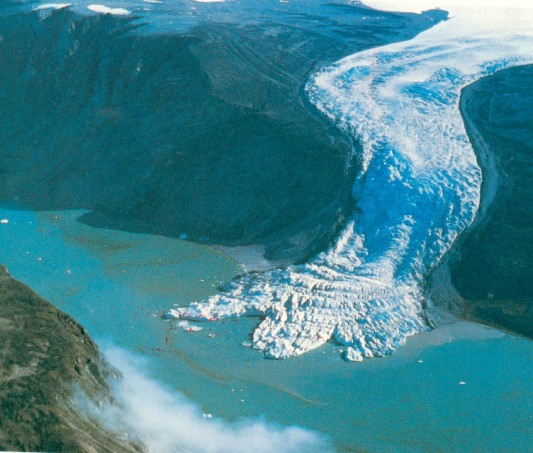Ice Skating is very elegant to look at, if you do not keep falling on the ice floor. However, you can not learn skating if you do not fall for a few times. Here are easy steps on how to learn, even for the first time on skates.
First thing to learn is always to get your balance. Keep your head up, do not look down and do not bend forward. Both of your arms should be at your waist and keep your hands relaxed. Keep both of your feet together, slide them back and forth a little bit, and try to glide along on these two feet. Your first steps on the ice may be frightening, but do not worry, each step will be an improvement. It will not be long until you will get used to the feeling of being in skates.
After you already improved your gliding, you can begin practicing stroking. Bend slightly forward at the waist. Push off from the front part of the blade on either foot. Never push of using your toe picks. If you are pushing off with your right foot, bend your right knee as you begin to stroke and straighten it as you end your glide. Do the same for the left foot.

You must also learn how to stop. Glide in a straight line with your feet about more than one ruler apart. Then, force your heels apart and point your toes together to make a snowplow position. This will bring you to a halt. More experienced skaters use hockey stop.
You must learn how to turn. The best way is using a crossover method. Your free foot should pass in front of your skating foot. Then your free foot is placed on the ice and your weight shifted for it. For example, if you wish to turn to the right while skating on the right foot, bring the left foot in front of the right. Shift your weight gradually until the left foot crosses over the right and touches the ice on the inside edge. The left foot now carries the weight and the right food can be lifted from the ice. Bring it up beside the left foot up and cross it in front as before. Repeat these steps.








 A lot of the pre-historic civilizations had unusual gods. However, it was the Greek who first believed that the world was controlled by powerful beings called as gods and goddesses who looked, dressed, spoke and acted like the people of the Greece. However, they powers that no mortal being can acquire or do. Because of these myths, we were able to understand their culture, tradition and ideals. These amazing stories are likely to be originated as early as 1000 B.C. These beliefs were passed down from generation to generation by poems and even songs. Later, they were acted in plays and were also written down. All through the western civilization, we find the myths represented by sculptures, paintings, literature and music. Some of our common words also came from the mythology of the Greeks. One example is the Atlas which is the Titan Atlas, that holds the earth stable with his strong shoulders. When the Romans invaded the Greeks, they did not destroy their marvelous ideas and beliefs. Instead, they adapted most of them and improved some names and terms. They had high respect for the Greek people. Instead of Greek names, they change the names of the gods and goddesses to Latin names.
A lot of the pre-historic civilizations had unusual gods. However, it was the Greek who first believed that the world was controlled by powerful beings called as gods and goddesses who looked, dressed, spoke and acted like the people of the Greece. However, they powers that no mortal being can acquire or do. Because of these myths, we were able to understand their culture, tradition and ideals. These amazing stories are likely to be originated as early as 1000 B.C. These beliefs were passed down from generation to generation by poems and even songs. Later, they were acted in plays and were also written down. All through the western civilization, we find the myths represented by sculptures, paintings, literature and music. Some of our common words also came from the mythology of the Greeks. One example is the Atlas which is the Titan Atlas, that holds the earth stable with his strong shoulders. When the Romans invaded the Greeks, they did not destroy their marvelous ideas and beliefs. Instead, they adapted most of them and improved some names and terms. They had high respect for the Greek people. Instead of Greek names, they change the names of the gods and goddesses to Latin names.